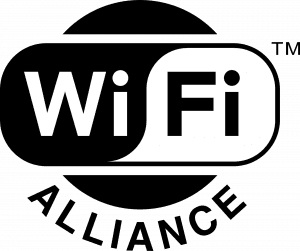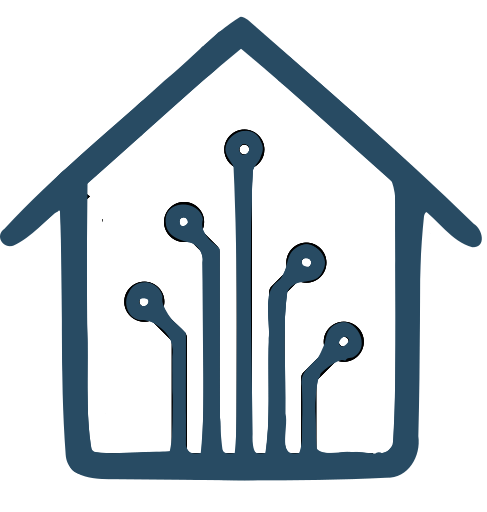Ever wished your house could tell the difference between a rogue tumbleweed and your actual grandma? Well, fret no more, fellow automators! The world of Zigbee sensors offers two distinct heroes: motion sensors and human presence sensors. But what's the difference, you ask? Buckle up, because we're about to dive into a hilarious showdown that'll […]
Getting Started With Smart Homes
Getting Started With Smart Homes
The first decision you make when getting started with smart homes impacts all of your future purchases. You'll need to pick what technology you are going to use to connect all of your devices. For a seamless experience you want most of your devices to communicate on the same protocol and that the protocol doesn't lock you down to one software vendor. In this post we'll cover the big three smart home protocols and weigh the pros and cons of each; wifi, zwave and zigbee.
Wifi Smart Home Ecosystem

Wifi has three main benefits over zwave and zigbee. First is that wifi is already likely to be installed in your home allowing you to get started using smart home devices quickly. The second is that it does not require you to purchase an additional hub to control your devices. Finally you can find many devices at a lower cost than zwave and zigbee.
These up front benefits also come with some long term disadvantages. By using wifi to communicate the devices will put additional load on your home network. With high bandwidth video streaming becoming common place it is very likely that you'll want to limit excess devices on your network to improve performance for all of your other devices.
Wifi devices also usually require an active internet connection to operate. This can be a deal breaker for the home automator focused on network security since most wifi devices need to communicate with remote servers you do not control. They also are built with inconstant security standards that can leave them prone to being compromised and hacked by malicious actors.
One of the biggest benefits is that wifi devices do not require a hub. Not requiring a hub and having cheaper per device costs will lower your overall expense compared to zwave and zigbee but you lose the integration experience that the other home automation protocols provide. The lack of hub means that you will likely end up having to use multiple apps to control your devices. You sometimes get some integration through the use of a home assistant like Amazon's Alexa speaker or Google's Home but you will lack the depth of automation you can get with a hub based protocol. Devices that use wifi that are not wired will also end up using more batteries than the lower power consuming alternatives.
Wifi Smart Home Pros
- Wifi likely already installed in your home
- No Need to purchase a hub
- Cheaper per device cost
Wifi Smart Home Cons
- Can increase wireless congestion
- Requires multiple apps to operate
- Less automation with multiple devices
- High battery usage for remote devices
- Increased likelihood of hacking
Z-Wave Smart Home System

The z-wave smart home protocol was created in 1999 by the Zensys corporation. The protocol was later adopted by a group of companies that formed the Z-Wave alliance to push for adoption of the protocol and cooperation between manufactures in creating an open platform. All devices using the z-wave branding are certified to work on the z-wave platform by the z-wave alliance. As of June 2022 there are over four thousand certified z-wave devices.
Z-wave is a mesh network technology where each device acts as a repeater for the other devices on the network. This is an advantage over wifi where your distance is limited by the location of your wireless access point. Each device acting as a repeater allows your network footprint to expand as each device is added. The devices also work in the 900 mhz low energy frequency. This frequency range has the advantage of being less used than the more common 2.4 ghz range so interference is less common with z-wave devices. The 900 mhz frequency does limit the total amount of bandwidth that can be transmitted over the frequency compared to 2.4 ghz devices.
When you're getting started with smart homes using z-wave you'll first need to purchase a hub to connect all the devices to. This will be the brain of your entire ecosystem and the place where you do all your interactions and automations. The initial cost of a hub is made up with the tight integrations that you are able to accomplish with a hub based smart home. Samsung previously had the most popular z-wave hub with their SmartThings v3 but that device has since been discontinued. Aeotec and other vendors make z-wave hubs that work through the smart things app platform. Other players in this space include Hubitat, Homey, and Thinka. For the more tech inclined users can also create their own hub using a usb z-wave stick and a single board computer like the raspberry pi.
Check out our article on the top z-wave hubs.
Z-Wave Pros
- Good automation integration between devices
- Each device expands the network footprint
- Good battery life
- Longer range than zigbee
Z-Wave Cons
- Higher upfront cost
- Slower speeds than zigbee
- Requires hub
Zigbee Smart Home System

The zigbee protocol was standardized in 2003 and is an open source format. Creators of zigbee devices have lower costs since they do not need to pay licensing fees, they only pay to have their devices zigbee certified. 207 companies are currently part of the zigbee working group and are actively making zigbee devices.
The protocol uses the 2.4 ghz frequency to communicate between devices and like z-wave each device acts as a repeater radio so each device will expand the depth of your network allowing you to increase your network range by adding more devices. The 2.4 ghz frequency allows each device to carry more bandwidth and is better for higher data transmission activities. Most home automation devices do not see much gains from the higher bandwidth and the increased speeds are not noticeable to the end user. The frequency benefits do come at the cost of increased power consumption over z wave devices and the possibility of interference in the crowded 2.4 ghz spectrum by other consumer devices like microwaves and wifi routers. 2.4 ghz also has a lower transmission range than the 800 mhz spectrum but should still be long enough for most residential situations.
To get started with zigbee you will need to purchase a hub to connect your devices to. This does increase your start up costs over wifi but like z wave the hub allows you to have more control over automations and allows your devices from different manufacturers to work together smoothly. The Amazon Echo 4th generation or Echo Show 10 have a built in zigbee hub allowing you to have a smart assistant and hub in one package. The popular aeotec smart hub supports the zigbee protocol and integrates into the popular SmartThings app for device and automation control.
Check out our article on top zigbee hubs.
Zigbee Pros
- Open protocol
- Higher bandwidth frequency
- Each device expands network
- Good automation integration between devices
Zigbee Cons
- Higher upfront costs
- Lower battery life than z wave
- Lower range than z wave
The Bottom Line
Now that we've explored the pros and cons of wifi, z wave and zigbee what is the best overall? It's our philosophy that your home automation technology should be reliable, consistent and future proof while making your life easier. Because of this we cannot recommend that you use wifi protocol as a basis for a starting smart home. The need for too many apps increases the complication and decreases each devices usefulness by limiting integrations. There are just too many benefits of using a hub based system for us to recommend anything else. As you add devices to a smart home network you will likely add devices that use wifi like smart vacuums, security cameras and some thermostats but their integration will be controlled by your hub.
Which Hub?
Thankfully when picking a platform you have many options that support both z wave and zigbee. The aeotec smart hud, the hubatat, or a home grown solution with a raspberry pi are the best solutions for getting started with smart homes.
Leave a Reply
Remember the Clapper? That lonely device promising futuristic ease of use that ended up gathering dust under the couch? Well, dust off your dreams of automated lighting because Zigbee motion sensors with Home Assistant are here to make your smart home a reality (without the cheesy sound effects). Zigbee motion sensors are like tiny ninjas […]
You can now prepare for matter's future release and power all of your zigbee devices in one helpful stick. Supported by the home assistant team the future of smart home integration is here. You can now be matter ready
Whether you're just getting started with home assistant or a regular user you may need some ideas on how to simplify your life by adding automations or blueprints to your home assistant routines. We tracked down some of the most creative and useful routines that you can add to your home assistant. We'll list the […]
The matter smart home protocol was released this month, November 2022. What does this mean for your home automation? Will your current hub work? Are all of your devices obsolete? We'll run you through what matter is and why it will improve your existing smart home going forward and simplify your life. What is Matter […]
Of all the sensors you can integrate into your smart home ecosystem a door sensor or window sensor can have the most uses. You can utilize the door sensor beyond the basics of letting you know if a door has been opened to really take your home automations to another level. In this article we'll […]
The Raspberry Pi single board computer is the tinkerers best choice for getting started with DIY home automation without vendor lock in. The raspberry pi is widely available and has tons of community support compared to some other single board computers. We'll show you how to get started with home assistant on raspberry pi. Required […]
The Best Home Assistant Hub Smart home power users, tinkerers or security conscious people choose home assistant as the control center for their smart home. We'll go through all the options and help you find the best home assistant hub to get you started in your smart home. Keep reading to find the best stand […]
The Best Door Sensor For Home Assistant
Get started with smart homes. Pick your protocol and plan your purchases for home automations that just work.
